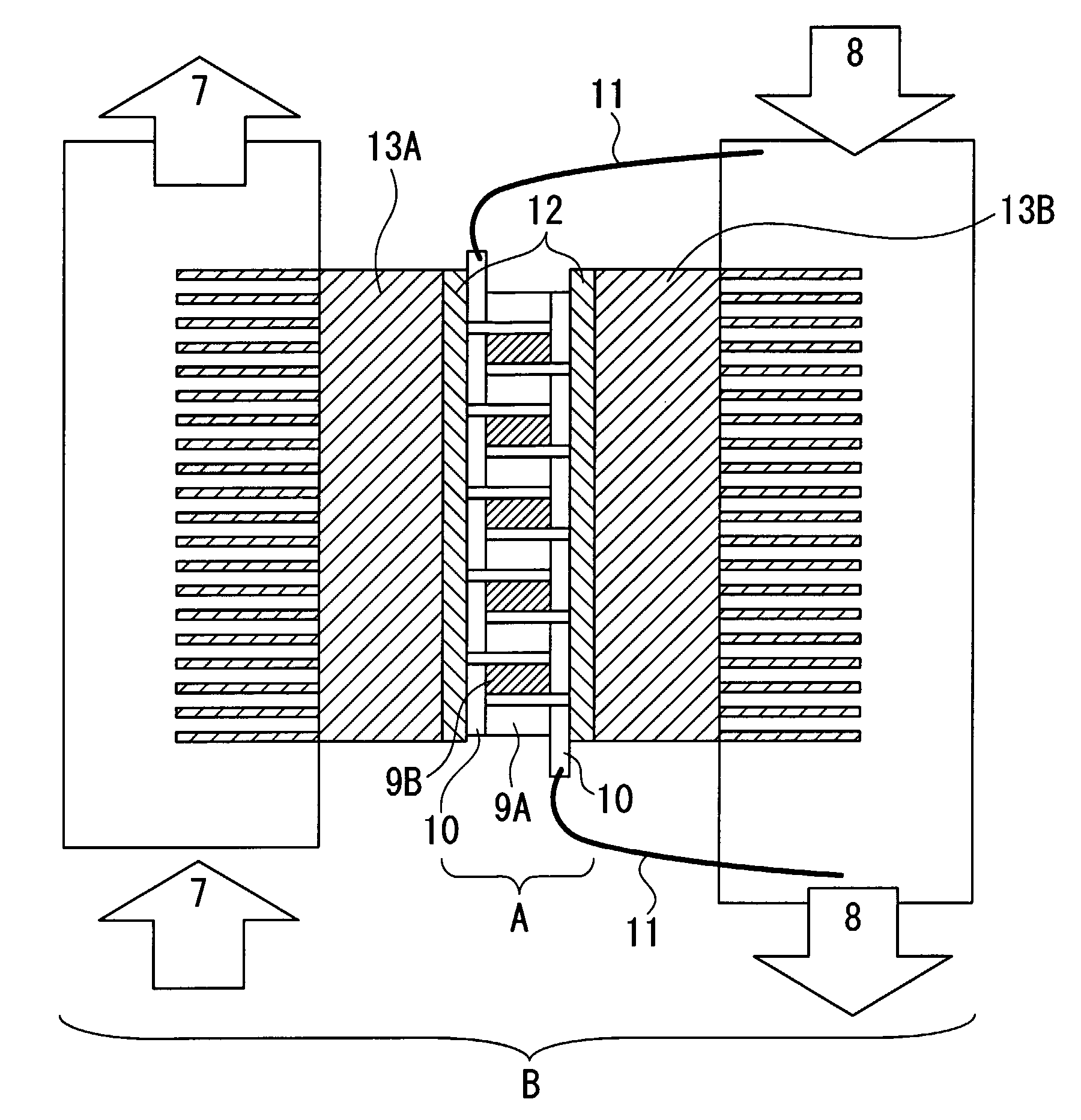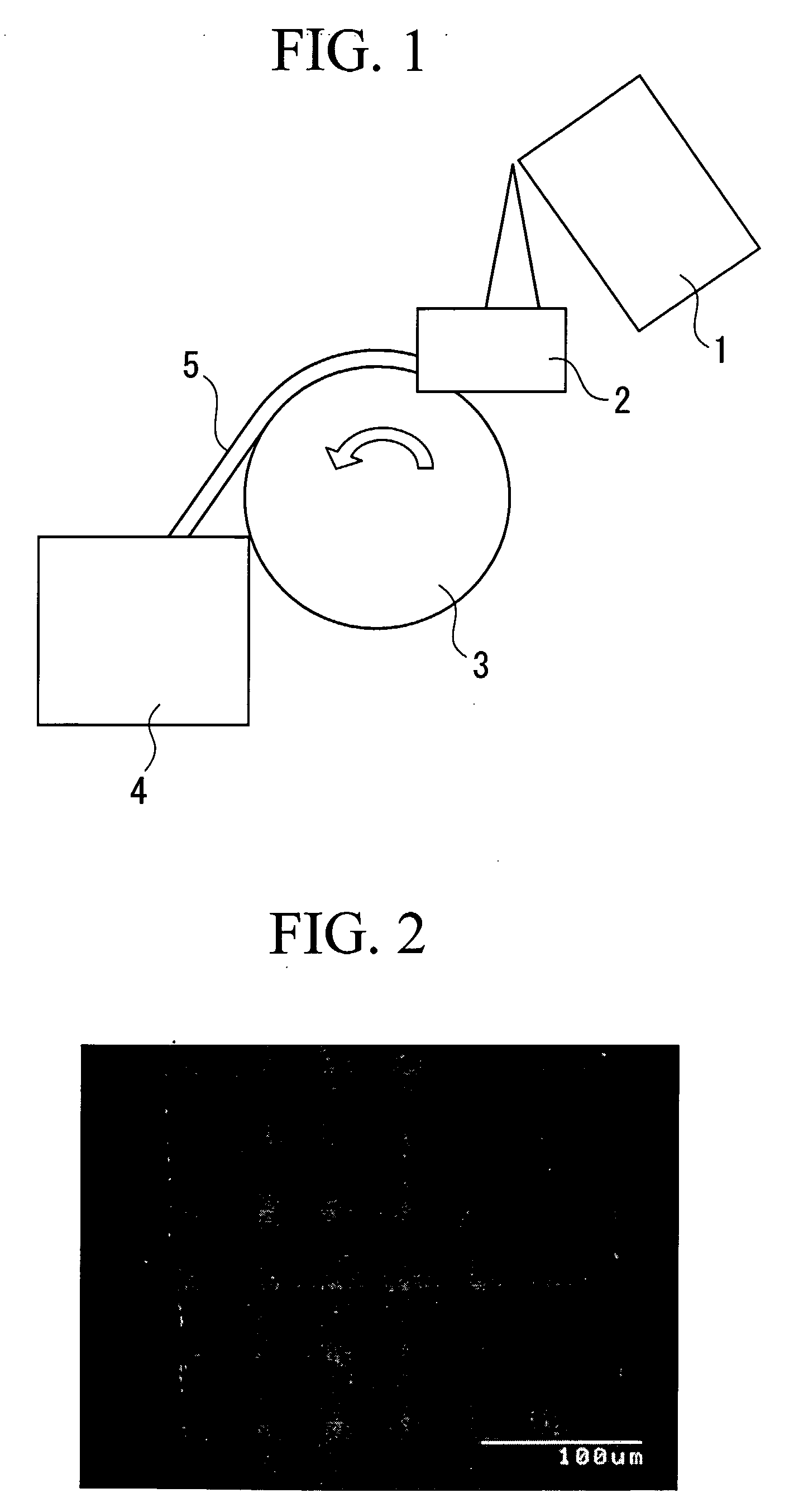Production Method of Thermoelectric Semiconductor Alloy, Thermoelectric Conversion Module and Thermoelectric Power Generating Device
a production method and technology of thermoelectric semiconductor alloy, applied in the manufacture/treatment, transportation and packaging of thermoelectric devices, thermoelectric devices, etc., can solve the problems of increasing cost and a great deal of effort, and achieve the effect of low cost and high performan
- Summary
- Abstract
- Description
- Claims
- Application Information
AI Technical Summary
Benefits of technology
Problems solved by technology
Method used
Image
Examples
example 1
[0065] Sponge Ti (purity: 99% or more), sponge Zr (purity: 99% or more), electrolytic Ni (purity: 99% or more) and Sn metal (purity: 99.9% or more) were weighed to give a half Heuslar-type (TixZr1-x)NiSn composition after casting, and high-frequency melted at a temperature up to 1,700° C. under 0.1 MPa in an Ar atmosphere. Thereafter, by using a strip casting apparatus shown in FIG. 1, the molten metal was poured from the crucible 1 through the tundish 2 on the water-cooled copper roll 3 rotating at a spherical velocity of 0.9 m / sec to produce an alloy flake 5, and the alloy flake was collected in the container 4. The average thickness of the alloy flake 5 was 0.25 mm. In this casting, the cooling rate was estimated to be about 7×102° C. / sec.
[0066]FIG. 2 is a back scattered electron image showing the cross section of the alloy obtained as above. As seen from this, the alloy flake has a uniform structure in the entire region. Also, it is known from the X-ray diffraction pattern of F...
example 2
[0073] Electrolytic iron (purity: 99% or more), ferrovanadium (Fe-V, JIS FV1, V purity: 87%) and Al metal were weighed to give a Heuslar-type Fe2(VxTi1-x)(AlySi1-y) (020 shown in FIG. 1, the molten metal was poured from the crucible 1 through the tundish 2 on the water-cooled copper roll 3 rotating at a spherical velocity of 0.9 m / sec to produce an alloy flake 5, and the alloy flake was collected in the container 4. The average thickness of the alloy flake 5 was 0.28 mm. In this casting, the cooling rate was estimated to be about 7×102° C. / sec. FIG. 5 is a back scattered electron image showing the cross section of the alloy obtained, and FIG. 6 is a powder X-ray diffraction pattern of the alloy. As seen from these, a Heuslar alloy comprising a single phase can be obtained by the quench-solidification method. The ratio of strongest peak of the Fe2VAl was 100%.
[0074] This alloy was ground to 200 μm or less by a stamp mill and then pulverized at 0.5 MPa in a nitrogen steam by a jet mi...
PUM
| Property | Measurement | Unit |
|---|---|---|
| Fraction | aaaaa | aaaaa |
| Particle diameter | aaaaa | aaaaa |
| Cooling rate | aaaaa | aaaaa |
Abstract
Description
Claims
Application Information
 Login to View More
Login to View More - R&D
- Intellectual Property
- Life Sciences
- Materials
- Tech Scout
- Unparalleled Data Quality
- Higher Quality Content
- 60% Fewer Hallucinations
Browse by: Latest US Patents, China's latest patents, Technical Efficacy Thesaurus, Application Domain, Technology Topic, Popular Technical Reports.
© 2025 PatSnap. All rights reserved.Legal|Privacy policy|Modern Slavery Act Transparency Statement|Sitemap|About US| Contact US: help@patsnap.com



